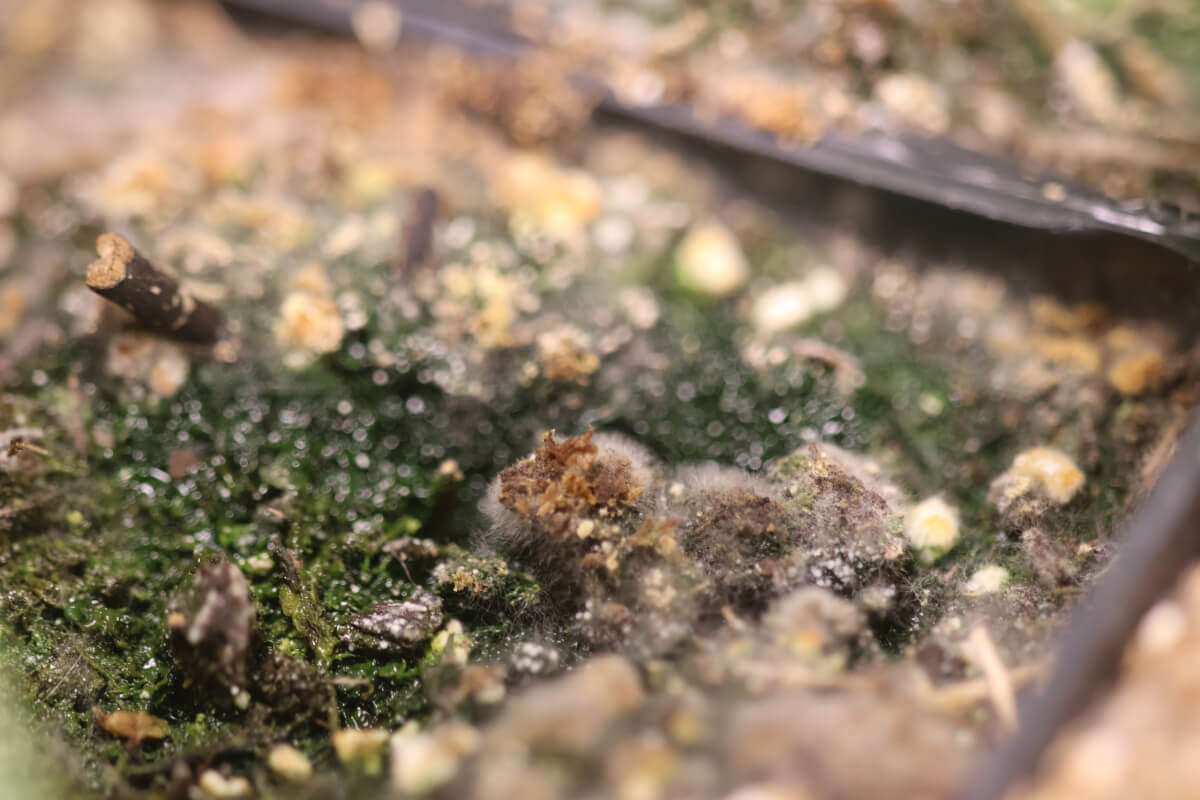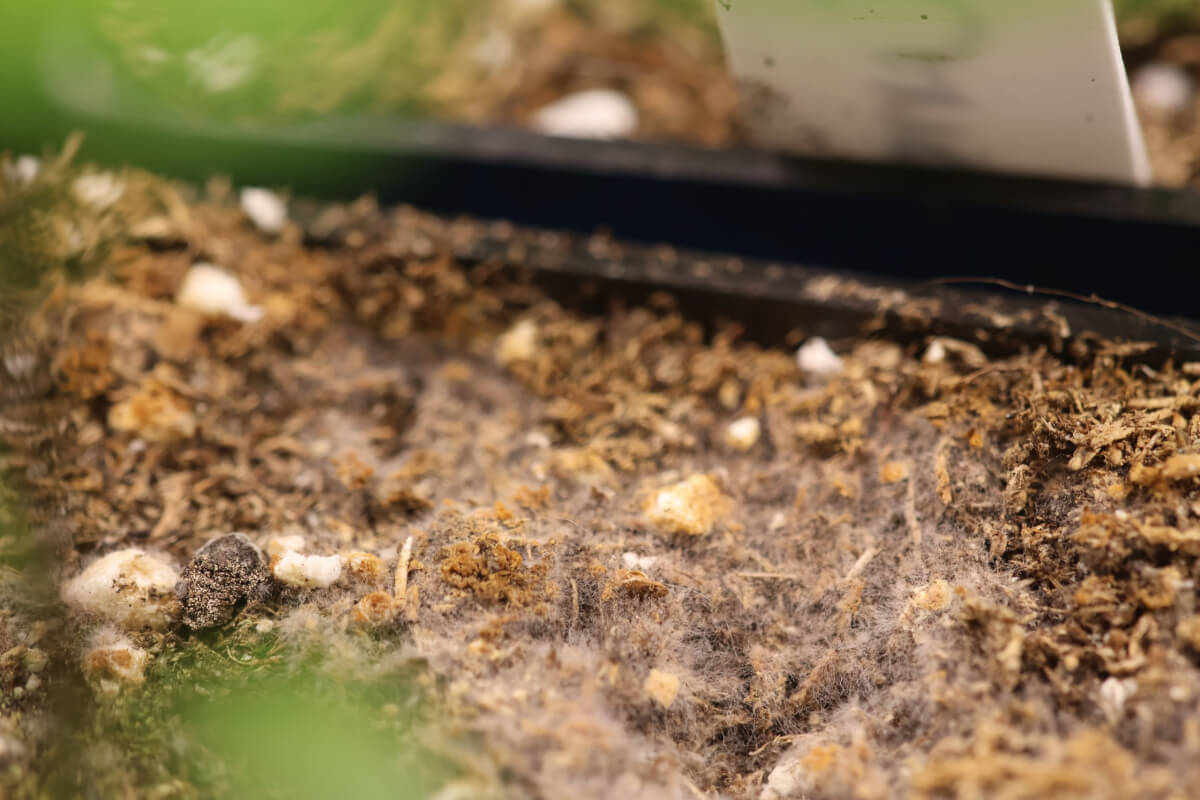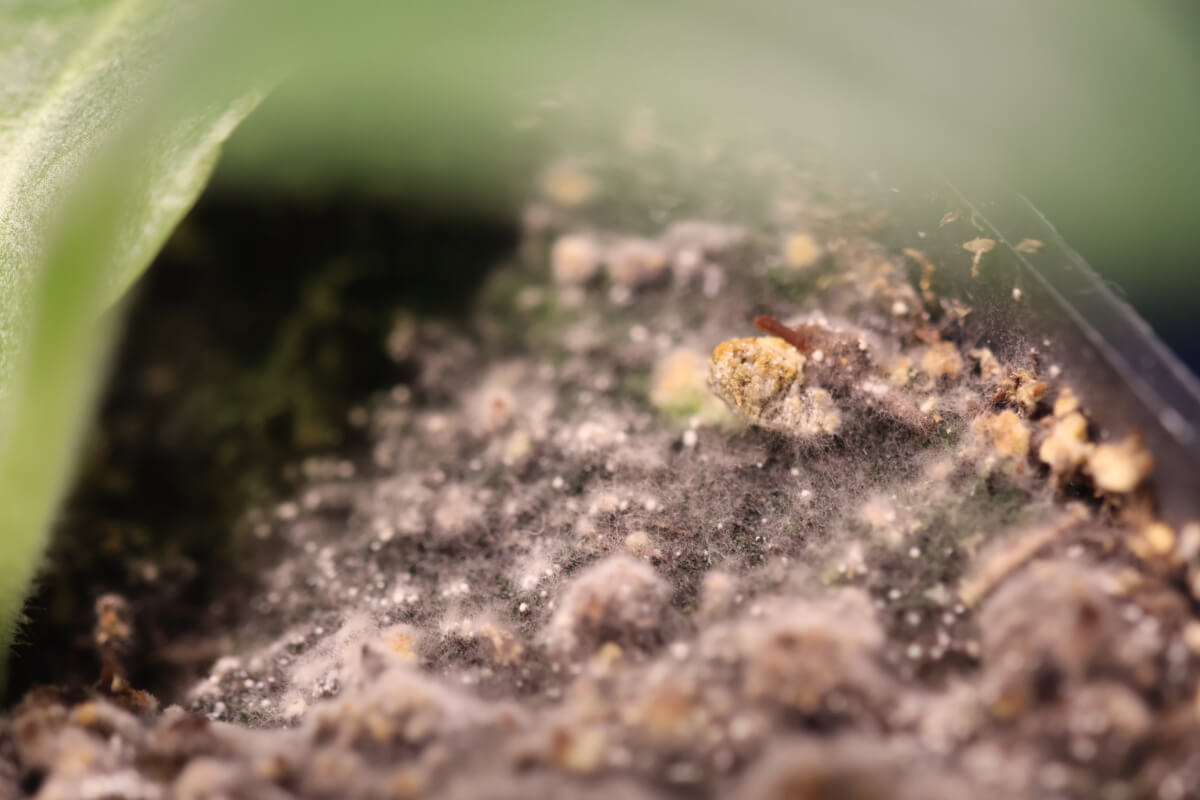We’re having a small problem here that provides us a good teaching moment! We’re getting a bit of mold/fungus in some of our plant’s soil. This might cause a little bit of panic or uncertainty for newer growers, so this is a great opportunity for us to talk about this!
First, there are several types of fungus that can develop on your plant’s soil. This one is called white mold, easily identified by the fact that it’s “fuzzy” and looks a bit like tufts of cotton. This particular fungus is quite harmless to your plants, fortunately. While fungus can negatively affect baby seedlings, more established plants will usually be un-phased by it, especially if you catch it early like we have. Nonetheless, we do want to “deal” with it and we’ll tell you how we do so in a second.
We’ve seen this fungus caused by poor quality potting soils and also poorly dried seeds we’ve sowed, but it can also come in when you overwater your plants. We are suspecting the latter here as we recently did a bit of travel, so we gave our plants a bit more water than usual to help them survive our absence. I’ve also realized we forgot to set up our air circulation fans this year, meaning we’re not getting as good of air circulation as we usually do! (This is exactly why we practice a lot of humility and admit our failures publicly, we sometimes struggle with “noob” gardening mistakes, too!)
There’s quite a few methods you can use to treat mold, but we’ll share our favorite and preferred method. We mix up a solution of 3% hydrogen peroxide (H2O2), which we prefer as it’s both a mold inhibitor and H2O2 can also be used by your plants! The “mix” is 1 part hydrogen peroxide to 4 parts water. (e.g. 1 tablespoon hydrogen peroxide plus 4 tablespoons water) The technical mechanism of action is the additional oxygen in the hydrogen peroxide. It oxidizes and destroys both fungus and bacteria. Both the hydrogen and oxygen in hydrogen peroxide are completely harmless to your plants, in fact some people use hydrogen peroxide as an ingredient to get oxygen to the plant’s roots!
We’ll often put this into a sprayer and apply it to our plant’s soil. You can also use a watering can to pour relatively small amounts on your soil. Again, there’s very few concerns with hydrogen peroxide as the chemical can be fully used by your plants. It’ll take a few days for the mold to be eliminated, just be patient.
It’s also important to address the “root cause” so it doesn’t continue to be a problem. In our case, we’re going to continue to let our plants dry up, get our air circulation fans installed as intended and keep an eye out for additional issues we need to address. Since we’re dealing with this problem shortly after it developed, we’re anticipating no ill effects. If you’ve got similar problems and want to deal with it, hopefully this helps you! If not, file it away in the “good to know” part of your brain!




